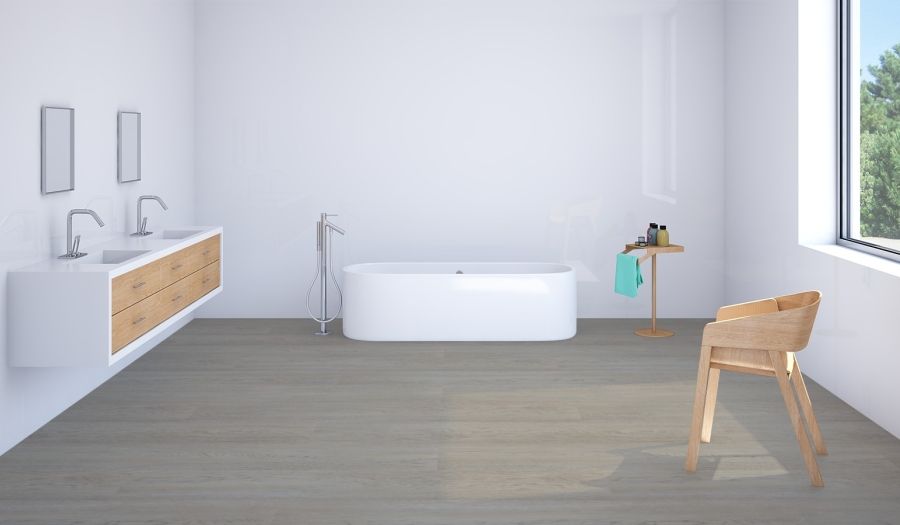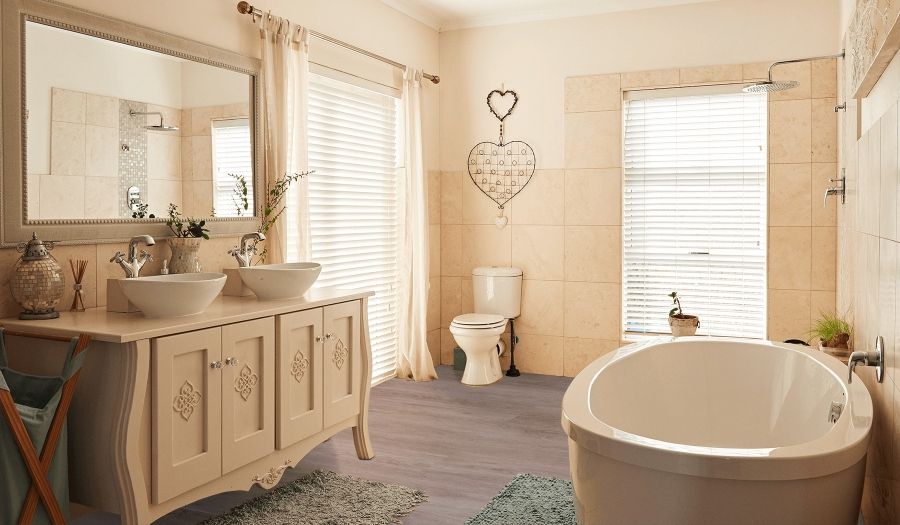
8 Common Problems With Installing Vinyl Flooring In Your Bathroom
8 Common Problems with Installing Vinyl Flooring in Your Bathroom
When we think of the flooring in a bathroom, we often envision ceramic or porcelain tiles. The flaw with tiles, though, is that once one or two crack, not much can be done to repair them. The installation also lasts decades and is expensive to redo, so when trends change, one is stuck with the same, dated aesthetic. It is for these reasons that installing vinyl flooring in bathrooms has become so popular. Homeowners that are tempted to tackle a DIY vinyl flooring installation in the bathroom should beware, however, as there is plenty that can go wrong and cause expensive problems.
Reasons Installing Vinyl Flooring in a Bathroom Works so Well
Vinyl flooring comes in different forms, and popular versions include LVTs (tiles), LVPs (planks), and sheeting. There are several benefits to installing this flooring type in a bathroom, such as:
- There are endless designs from which to choose.
- Vinyl flooring emulates natural materials quite well. Whether you like the idea of stone tiles or solid wooden floors in your bathroom, installing this kind of floor will give you the look you want.
- Compared to ceramic, porcelain, stone, and wooden planks and tiles, this is one option that remains economical and budget-friendly.
- It fares better with water exposure than wood laminates. Laminate floors are somewhat water-resistant, but enough exposure will leave them damaged. Many LVTs and LVPs on the market today are completely waterproof and are suited for use in a high-moisture area such as a bathroom.
- It’s warmer and softer underfoot. Stone tiles stay rather cold during winter, while LVT and LVP floor coverings have in-built cushioning that keeps it warmer to the touch and feels more comfortable while walking.
- It’s easy to clean and requires only sweeping and damp mopping. Any spills or water that gets on the floor can be easily wiped up.
The Biggest Problems with Self-installations
Because the professionals make installations look so easy, do-it-yourself fanatics often attempt to install it themselves. Unfortunately, improper preparation can lead to problems with installing vinyl flooring in a bathroom, which can be a headache to fix.
1. Levelling Your Substrate Floor
When problems arise with LVT or LVP installations, it is very often caused by inadequate subfloor preparation. The first concern is that the substrate floor must be completely level, and screeding is usually required to achieve this. Vinyl flooring materials conform to the surface they are applied on, and unevenness in the subfloor will show in the installation. Even if the pattern or grain on the floor hides obvious distortions, the product’s lifespan will still shorten significantly.
2. Moisture in the Substrate Floor
LVTs and LVPs boast waterproof features, but moisture from beneath the product can still seep into it and cause damage. Oftentimes, this comes from a subfloor, such as concrete, that contains moisture. This moisture can cause several issues such as mould and mildew growth, discolouration of the product, deterioration of the adhesives and warping of the product’s shape. Professionals can test the subfloor’s moisture levels and introduce a moisture barrier to prevent this.
3. The Substrate Floor Must be Clean
LVTs and LVPs are susceptible to damage from abatement chemicals. One must ensure that the subfloor is free from any chemicals, adhesives or any other contaminant that may give rise to problems.
4. Uncertainty About the Installation Method
With LVT and LVP floors, you will need to choose an installation method before installing it. Each method may present its problems in the long run if not properly installed. Many have click or lock systems that simply snap into place, while it is also possible to glue them down with an adhesive.

5. Accounting for Temperature Changes
Heat and cold can cause problems for vinyl flooring, which may expand and contract as temperatures change. This means that while installing the product, one must carefully control the environment to ensure a seamless installation. It is also essential to leave enough space between the planks or tiles to account for this expansion and contracting.
6. Choosing the Right Underlayment
Many homeowners who opt for installing their LVT or LVP floors at home forget about the importance of the right kind of underlayment. Some products have a layer of underlayment already built-in, while others will require one. Using an underlayment that is too soft, for example, may cause major problems with the structure of the plank or tile.
7. Architectural Difficulties
Installing vinyl flooring in your bathroom alone is seldom as simple as laying out a few planks in a perfectly rectangular room. There are rounded corners, nooks behind the sink or toilet, pre-fitted cabinets and even pre-tiled floors to get around. Without the right tools, there are plenty of architectural hurdles in a bathroom that can get in the way and cause problems.
8. Going Over Your Budget
A lack of expertise and proper tools and resources could see your project turn into a costly endeavour. Making any mistakes that need redoing will also cost more time and money and going over one’s budget becomes all too easy. Ultimately, getting a professional installer may be much more affordable.
The bottom line is that when it comes to installing vinyl flooring, the best way to avoid issues is to contact professionals. If you are seeking quality LVT or LVP floors or a superb installer, be sure to contact us for a quote.

